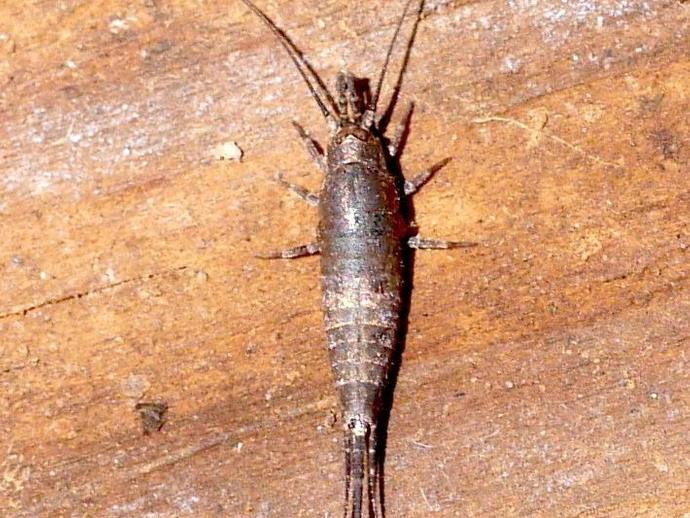April 22, 2021
Better late than never! Here is today's edition of #BenInNature presented by our friends at Carter Bank & Trust!
Here's an unusual critter: this is a jumping bristletail, and according to VMNH Associate Curator of Invertebrate Zoology Dr. Kal Ivanov, it's most likely Machiloides banksi, a type of rock bristletail.
So what exactly is a bristletail? It's a very primitive insect! Bristletails belong to the order Archaeognatha, and they first appeared in the Middle Devonian period about the same time as arachnids (spiders and relatives) first appeared. The Devonian began about 420 million years ago and ended about 360 million years ago. This was the period when life first began migrating from the oceans to dry land; the Devonian began nearly 200 million years before dinosaurs first appeared!
Bristletails haven't changed much in the intervening millennia. It was once believed that bristletails belonged to the same order as silverfish and firebrats, two common basement pests that look quite similar. However, silverfish and firebrats have since been moved to the order Dicondylia, which includes every insect in the world ... except jumping bristletails! These guys are so unique that they get their very own order! The two orders are based on the way that these insects' mouths operate. Jumping bristletails have a mandible connected to the head by a single ball joint, while all other insects have two joints. There are other features I could go into, but I realize taxonomy isn't exactly the most thrilling thing in the world.
If you'd like to spot a jumping bristletail yourself, try looking under rocks and logs in the woods; they have very thin exoskeletons that don't offer much protection against dehydration, so they have to stay in cool, damp areas.
ABOUT #BenInNature
Social distancing can be difficult, but it presents a great opportunity to become reacquainted with nature. In this series of posts, Administrator of Science Ben Williams ventures outdoors to record a snapshot of the unique sights that can be found in the natural world. New updates are posted Monday - Friday, with previous posts highlighted on the weekends. This series of posts is made possible thanks to the support of VMNH Corporate Partner Carter Bank & Trust (www.cbtcares.com).
NATURE PHOTO IDENTIFICATIONS
If you discover something in nature that you would like help identifying, be sure to message us right here on Facebook with a picture (please include location and date of picture) and we'll have our experts help you identify it!

 Hours & Admissions
Hours & Admissions Directions
Directions

